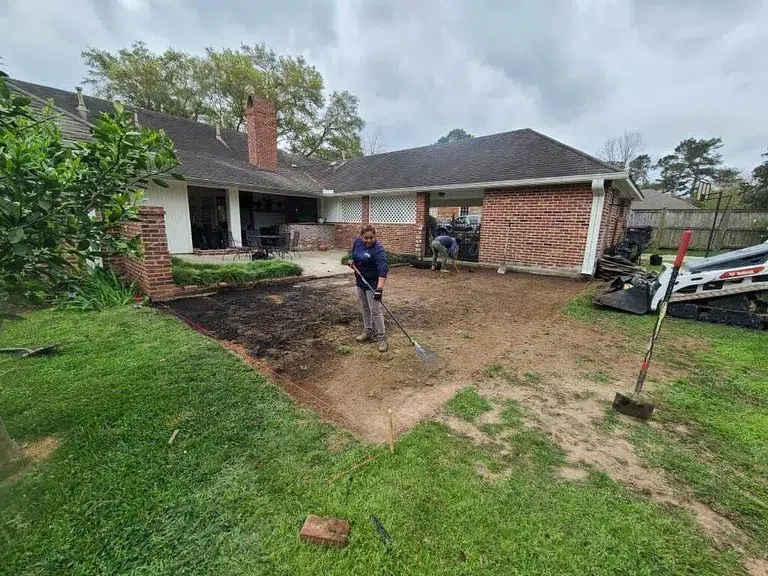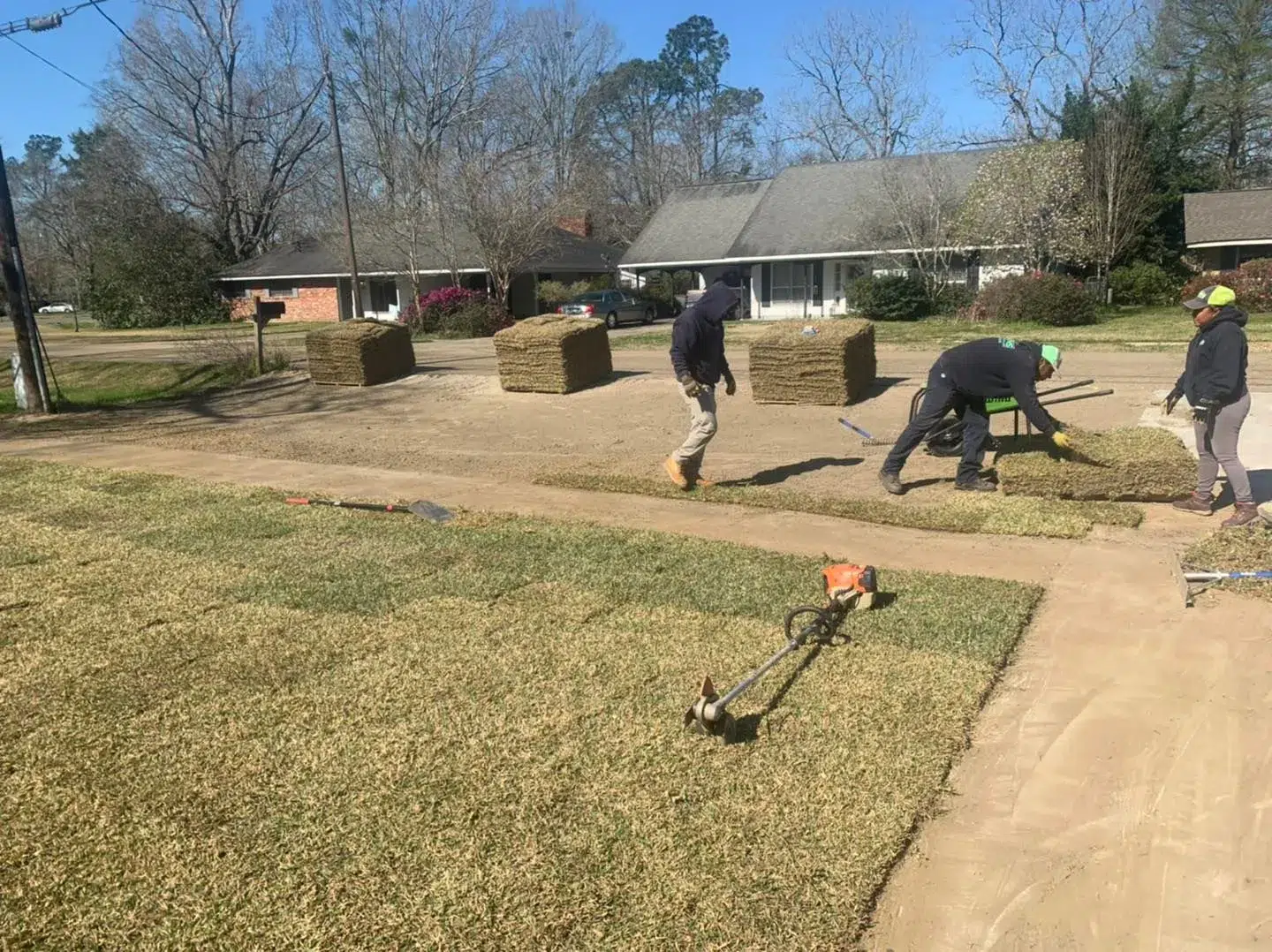The best time to fertilize your lawn in Addis, LA is during early spring and late fall. These periods align with the natural growth cycles of warm-season grasses, such as Bermuda and Zoysia, which dominate lawns in this region. Early spring fertilization (March–April) supports initial growth after dormancy, while a second application in late fall (October–November) helps roots store nutrients for winter survival.
Warm-season grasses respond best when soil temperatures rise above 65°F. Avoid fertilizing during extreme heat (mid-summer) or during dormant periods (mid-winter), as it can lead to nutrient loss and poor turf health. This guide explains how timing, product type, and soil conditions impact fertilization results in southern Louisiana.
All Seasons Landscaping & Lawn Care uses direct experience from regional soil and climate conditions to inform best practices. Local knowledge and application techniques are drawn from hands-on service delivery in West Baton Rouge Parish and surrounding areas.
Seasonal Fertilization Guide for Addis, LA
| Season | Fertilizer Type | Timing Window | Purpose | Considerations |
|---|---|---|---|---|
| Early Spring | Nitrogen-rich (slow release) | March to early April | Boost post-dormancy growth | Apply after soil temp > 65°F |
| Late Spring | Balanced NPK (16-4-8) | Late April to May | Strengthen blade density | Water within 24 hours post-application |
| Mid-Summer | Skip or light feed | June to August | Minimize stress in heat | Only if lawn shows signs of deficiency |
| Early Fall | Potassium-rich blend | September to October | Enhance root development | Supports drought resistance |
| Late Fall | Winterizer fertilizer | Late October to November | Prepare for dormancy | Avoid heavy nitrogen use |
Technical Fertilizer Specs and Soil Compatibility
| Factor | Specification |
|---|---|
| Optimal pH Range | 6.0 to 7.0 |
| Ideal Soil Type | Loamy or sandy loam |
| Common Grass Types | Bermuda, Centipede, Zoysia |
| Nitrogen Source | Urea-based for spring; sulfate-based for fall |
| Application Frequency | 2 to 4 times per year |
| Application Rate | 0.75 to 1.0 lbs. of nitrogen per 1,000 sq ft |
Bonus Tip: Always use a soil test kit before your first application of the year. This avoids over-fertilizing and ensures nutrients match the lawn’s actual needs.
Climate Factors That Impact Lawn Fertilization
Lawn performance in Addis, LA depends heavily on local weather patterns. The area falls under USDA Hardiness Zone 9a, where warm-season grasses thrive but face stress from high summer temperatures and frequent thunderstorms.
Key Regional Influences:
- Rainfall Patterns: High precipitation between May and July can wash out nutrients. Use slow-release products during these months.
- Humidity: Promotes fungal growth. Avoid fertilizing before heavy rains.
- Soil Temperature: Use a probe thermometer. Apply when temps reach 65°F.
Data Source: LSU AgCenter Soil Testing & Plant Analysis Lab; NOAA Climate Reports 2023
Things to Consider Before Making a Decision
- Soil Condition: Sandy soil drains quickly, requiring more frequent but lighter fertilization.
- Existing Lawn Health: Fertilization can’t fix disease or compaction. Address those first.
- Water Access: Fertilizers require watering to activate. Avoid fertilizing during water restrictions.
- Weed Presence: Pre-emergent herbicides can interfere with root absorption. Space out applications.
Bonus Tip: Apply fertilizer in the early morning or late evening to prevent evaporation loss.
Common Questions About Lawn Fertilization
When should I apply the first fertilizer of the year?
Mid-to-late March, once soil reaches 65°F and grass begins active growth.
Can I fertilize before rain?
Yes, if light rain is expected. Avoid heavy downpours that could cause runoff.
Is liquid or granular fertilizer better?
Granular offers longer-lasting release; liquid works faster but needs more frequent applications.
Do I need to mow before fertilizing?
Yes. Mow 1-2 days prior for better absorption and reduced clumping.
Relevant Services from All Seasons Landscaping & Lawn Care
Lawn Care Services Routine mowing, fertilization, and weed control based on seasonal needs in southern Louisiana.
Irrigation System Design and maintenance of watering systems that support consistent lawn health.
Drainage Services Solutions to prevent water pooling that can interfere with nutrient uptake.
Storm Cleanup Services Post-weather event removal of debris to restore soil contact and grass health.
Get Expert Fertilization Guidance
Contact All Seasons Landscaping & Lawn Care to align your fertilization schedule with local soil and weather conditions. For soil testing, seasonal timing, or lawn health assessments:
Phone: 225-276-8658 Email: [email protected]
FAQ Section
What happens if I fertilize too early in the season?
Early applications before soil warms can cause weak top growth and increased weed pressure.
How long does it take for fertilizer to show results?
Results typically appear within 7 to 10 days, depending on weather and watering.
Can I use the same fertilizer year-round?
No. Spring requires higher nitrogen, while fall needs more potassium. Rotate blends by season.
Do I need to aerate before fertilizing?
Aeration isn’t required but improves nutrient penetration and is recommended once annually.
How do I store leftover fertilizer?
Keep it sealed in a dry, cool space away from moisture and pets. Check for clumping before reuse.

